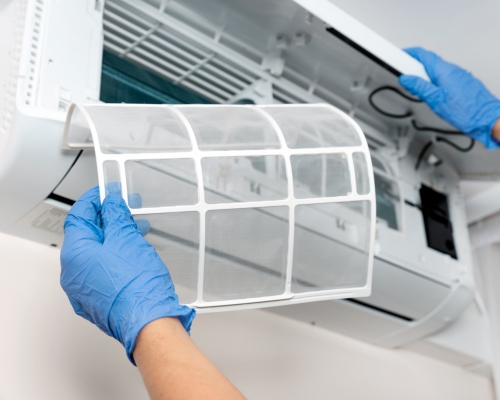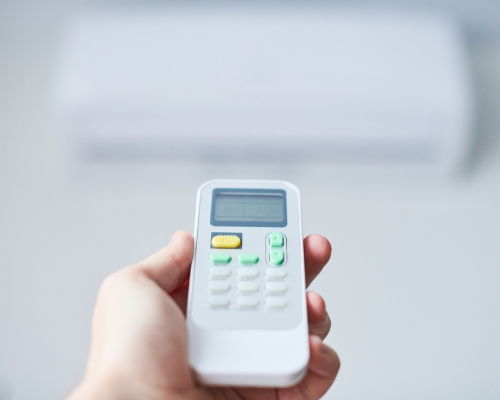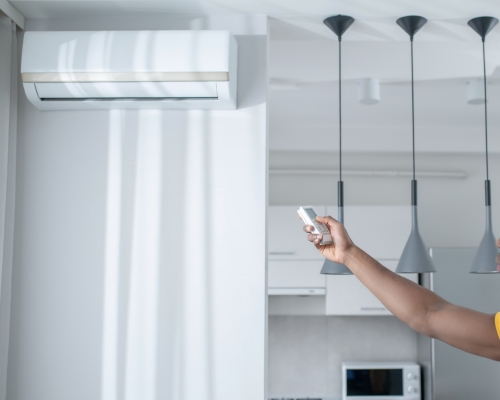The eternal struggle of keeping cool without breaking the bank is tough. You’ve probably fiddled with your AC’s thermostat more times than you’d like to admit, right? But what if I told you there’s a sweet spot; a temperature that’s neither a sweltering sauna nor an arctic tundra? Intriguing, isn’t it?
According to the U.S. Environmental Protection Agency (EPA), the best temperature for AC to save money is 78°F (25.5°C). Now, you’re not alone in this quest. Thousands are Googling the same thing, especially when the utility bill arrives, looking more like a ransom note than a monthly charge.
So, let’s cut through the noise. We’re diving deep into the science and the cents—yes, both kinds—of setting your AC just right. Ready to chill without chilling your wallet? Let’s go.
How AC Temperature Settings Affect Energy Consumption

The temperature you set on your air conditioner’s thermostat is directly proportional to the unit’s energy consumption. The lower you set the temperature, the harder and longer the AC has to work to maintain that level of coolness, thereby consuming more electricity.
For example, setting your thermostat to 72°F (22.2°C) instead of 78°F (25.5°C) can increase your energy usage by up to 6 % for each degree lowered. This is because the AC has to remove more heat from the air to reach a lower temperature, which requires more energy.
Moreover, constantly fluctuating temperatures can also make your AC work harder. When you set a lower temperature, the compressor has to run for longer periods, leading to increased wear and tear and, consequently, reduced efficiency over time.
Therefore, finding an optimal temperature that balances comfort and cost is crucial for long-term savings.
Why 78°F is Often Recommended for Energy Efficiency while Using AC
78°F (25.5°C) has emerged as the best temperature for AC to save money for several reasons. Firstly, this temperature strikes a balance between human comfort and the AC’s operational efficiency.
At 78°F, the air conditioner doesn’t have to work excessively to cool the indoor environment, ensuring that the unit doesn’t consume an inordinate amount of electricity. This temperature is also close to the average comfort zone for many individuals, especially when considering factors like clothing and activity levels.
By maintaining this temperature, homeowners can enjoy a comfortable living space without the financial strain of high energy bills.
Time-of-Day AC Temperature Adjustments for Maximum Savings

1. How to Adjust Your Thermostat Settings Throughout the Day
Managing your thermostat isn’t a set-it-and-forget-it affair; it’s more like a dynamic dance that changes with the rhythm of your daily life.
- In the morning, as the house begins to stir, a setting of around 78°F is generally agreeable.
- However, if the home is going to be empty for several hours because everyone is off to work or school, bumping the thermostat up to 80-85°F can yield energy savings without sacrificing comfort upon return.
- When evening rolls around and the family is back home, reverting to 78°F ensures a comfortable environment for dinner and relaxation.
- If you’re heading to bed soon, consider setting the thermostat to around 60°F -67°F. Your body naturally cools down as you sleep, so a slightly warmer setting shouldn’t affect your comfort level but will positively impact energy consumption.
2. The Impact of Time-of-Day Adjustments on Your Energy Bill
The beauty of these incremental adjustments is that they can lead to substantial savings over time. By elevating the temperature when the house is empty or during sleep, you reduce the workload on your AC unit, thereby consuming less electricity.
Importance of Humidity Control When Running an AC
1. Why Controlling Indoor Humidity is Crucial for Comfort and Savings While Using AC
While temperature often takes center stage in discussions about indoor comfort, humidity is the unsung hero—or villain, depending on how well it’s managed. Excessive humidity can make the air feel muggy and warmer than it actually is, compelling you to lower the AC temperature and inadvertently consume more energy.
On the flip side, low humidity can cause skin irritation, and respiratory issues, and even make the air feel colder, tempting you to crank up the heat in winter months. Both scenarios can lead to increased energy costs and compromised well-being.
2. How to Manage Humidity Levels Effectively
Managing indoor humidity isn’t just about setting a dehumidifier in the corner and forgetting about it. It’s an ongoing process that involves multiple strategies.
Here are some effective ways to control humidity:
1. Ventilation: Ensure that areas prone to moisture, like bathrooms and kitchens, are well-ventilated. Use exhaust fans to remove excess moisture.
2. Houseplants: Certain plants like Boston ferns and peace lilies naturally absorb moisture from the air, acting as natural dehumidifiers.
3. Air Circulation: Use ceiling fans to circulate air, which can help maintain consistent humidity levels throughout the home.
4. Dehumidifiers: For regions with naturally high humidity, investing in a dehumidifier can be a game-changer. Some advanced AC units come with built-in dehumidifying functions.
5. Hygrometers: These devices measure indoor humidity levels, helping you make informed decisions about when to use a humidifier or dehumidifier.
Energy Efficiency Beyond AC Temperature Settings

1. Importance of Sealing Leaks and Insulating Your Home
Even the most advanced air conditioning system can’t perform efficiently if your home is leaking cool air like a sieve. Gaps in windows, doors, and even electrical outlets can be escape routes for conditioned air, forcing your AC to work harder to maintain a comfortable temperature.
This not only spikes your energy bill but also puts undue stress on your AC unit, shortening its lifespan. Insulating your home by sealing these leaks with weatherstripping or caulk can dramatically improve energy efficiency.
Similarly, proper insulation in the walls, attic, and floors can act as a thermal barrier, keeping cool air in during the summer and warm air in during the winter.
2. Additional Appliances and Practices for a More Energy-Efficient Home
Beyond the thermostat and insulation, several other tools and habits can contribute to a more energy-efficient household:
1. Energy-Efficient Appliances: Opt for ENERGY STAR-certified appliances, which are designed to use less electricity without sacrificing performance.
2. LED Lighting: Switching to LED bulbs can reduce your electricity consumption for lighting by up to 80% compared to traditional incandescent bulbs.
3. Solar Panels: While a significant investment, solar panels can drastically reduce your reliance on grid electricity, leading to long-term savings.
4. Timers and Power Strips: Use timers for lights and smart power strips for electronics to ensure that they are only on when needed, reducing “phantom” energy consumption.
5. Regular Maintenance: Simple practices like cleaning or replacing air filters in your AC unit can improve airflow and efficiency, reducing energy costs over time.
Conclusion
While much of the focus on energy efficiency revolves around temperature settings, it’s clear that a holistic approach—encompassing time-of-day adjustments, smart technology, humidity control, and home insulation—can yield the most significant savings.
The journey to a more energy-efficient home is not just about finding that magic number on the thermostat but about understanding and implementing a range of strategies that work in harmony.
According to multiple studies and expert recommendations, setting your thermostat to 78°F (25.5°C) when you’re home and awake offers a balanced solution for comfort and cost-effectiveness.
By embracing these multifaceted approaches, you can chill in comfort without giving your wallet the cold shoulder.
I’m Grayson Watson, your frugal companion and the brain behind this money-saving extravaganza. Strap yourself in, because we’re about to embark on a wallet-friendly adventure like no other. Learn More!

